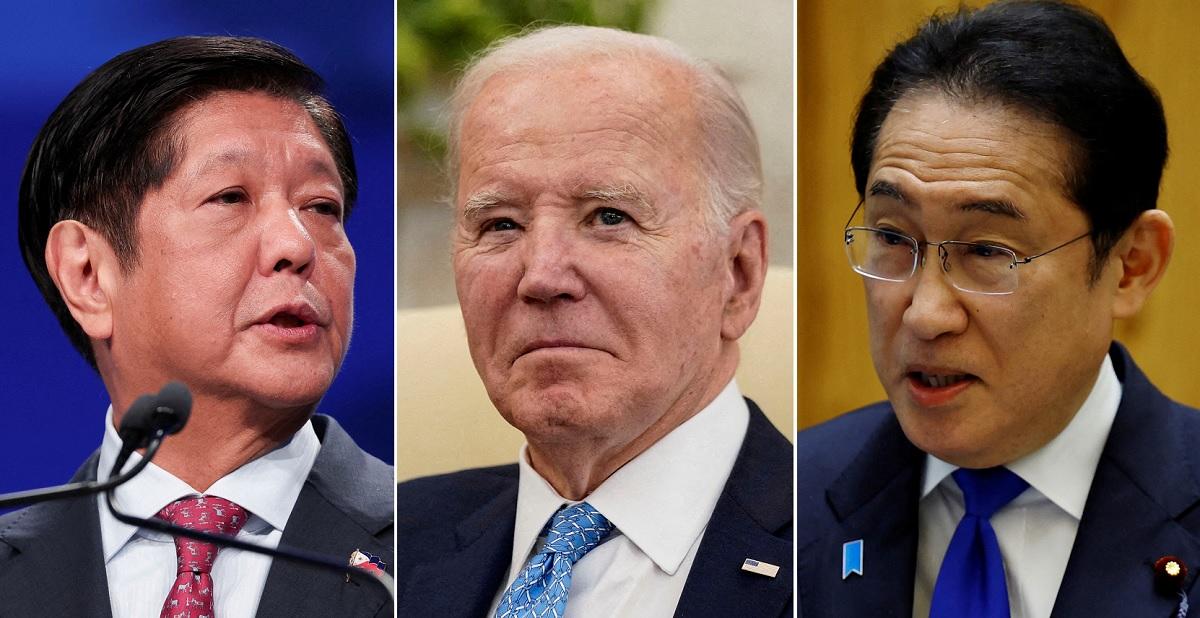Marcos arrives in Washington for summit with US, Japan
By JON VIKTOR D. CABUENAS, GMA Integrated News Published April 11, 2024 8:24am WASHINGTON DC — President Ferdinand “Bongbong” Marcos Jr. arrived at the Joint Base Andrews Airport here on Thursday morning (PH time) for his trilateral meeting with Japan and the United States to discuss economic cooperation. Marcos’ flight arrived at 7:47 a.m. (7:47 […]


By JON VIKTOR D. CABUENAS, GMA Integrated News
WASHINGTON DC — President Ferdinand “Bongbong” Marcos Jr. arrived at the Joint Base Andrews Airport here on Thursday morning (PH time) for his trilateral meeting with Japan and the United States to discuss economic cooperation.
Marcos’ flight arrived at 7:47 a.m. (7:47 p.m. Wednesday, US time).
Marcos is set to attend the first Trilateral Leaders Summit with US President Joe Biden and Japanese Prime Minister Fumio Kishida on April 11, with the trip essentially focusing on maintaining security and freedom of navigation in the South China Sea.
Marcos is also set to have a bilateral meeting with Biden.
“This trilateral summit is probably one of the most momentous and historical moments in our history because of the fact that number one, it’s the first time that we will have a meeting with three leaders, two of which are obviously our allies, major allies, United States and Japan,” Philippine Ambassador to the United States Jose Manuel Romualdez said in a briefing.
“This meeting is not only important but is also significant in the sense that the President, who has always believed in multilateral approaches to any of the issues surrounding our challenges that we face in the Indo-Pacific Region is exactly what we are going to be doing here in Washington DC during the summit,” he added.
During the summit, leaders of the three countries are set to adopt and issue a Joint Vision Statement.
Bilateral meetings have also been scheduled between Foreign Affairs Secretary Enrique Manalo and Trade Secretary Alfredo Pascual and their US counterparts on April 11.
According to White House national security adviser John Kirby, the parties are looking at “institutionalizing” the trilateral summit moving forward.
“When we talk about institutionalizing, what we’re talking about is finding ways to make trilateral cooperation between the United States, Japan, and the Philippines more sustainable over the long haul,” he said in an earlier briefing.
“There’s an awful lot of opportunity here between our three countries and the President wants to explore how we can deepen that, but again, just as critically, keep it going long term,” Kirby added.
Marcos earlier said the Philippines’ trilateral engagement with US and Japan is meant to maintain peace and not to win any conflict in the region, as 60% of international trade passes through the South China Sea.
The summit will be held on the heels of a joint multilateral maritime cooperative activity (MMCA) conducted by the three parties, along with Australia, within the Philippines’ exclusive economic zone (EEZ), which sought to “uphold the freedom of navigation and overflight, and respect for maritime rights under international law.”
The Philippine Department of National Defense (DND) said the activity was a “show of unity” among the four countries, as it said it expected China to “malign” the exercise.
For its part, Beijing’s People’s Liberation Army (PLA) Souther Theater Command said it organized “joint naval and air combat patrols in the South China Sea” while the MCA was taking place.
“All military activities that mess up the situation in the South China Sea and create hotspots are under control,” it said in a statement. Further details about its military activities were not announced.
Just last week, Marcos said the Philippines wanted to maintain peace in the West Philippine Sea, but it needs to “respond to the actual situation on the ground.”
The China Coast Guard on March 23 water cannoned a Philippine resupply ship en route to the Ayungin Shoal, causing heavy damage and hurting three sailors. The Philippine vessel was on a mission to provide supplies to the decrepit Navy vessel the BRP Sierra Madre that has been aground in Ayungin Shoal for years.
Prior to leaving for Washington, Marcos said he was “horrified” by the supposed gentleman’s agreement entered into by former President Rodrigo Duterte with the Chinese government involving the BRP Sierra Madre.
He said he is waiting for Chinese Ambassador Huang Xilian to return to the Philippines and explain the said agreement.
Latest data from the Philippine Statistics Authority (PSA) show that the United States was the biggest recipient of Philippine exports as of January 2024, with $902.33 million or 15.2% of total exports, followed by Japan with $869.25 million.
In terms of imports, Japan was the second-largest supplier of shipments into the Philippines during the month, with $789.36 million, behind China at the top spot with $2.65 billion. The United States came in fifth with $671.86 million. —KBK, GMA Integrated News














